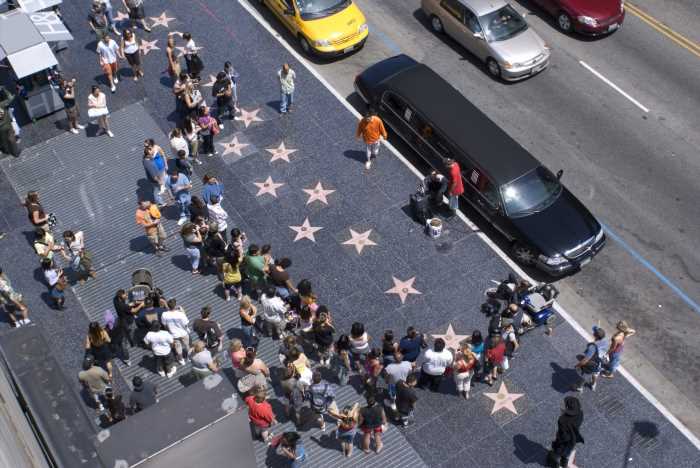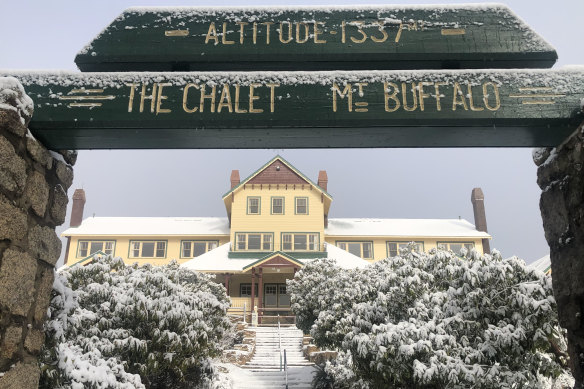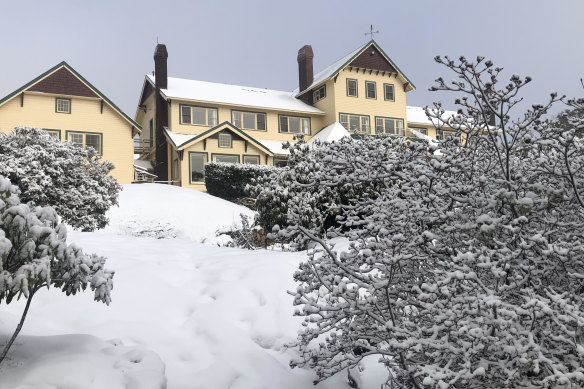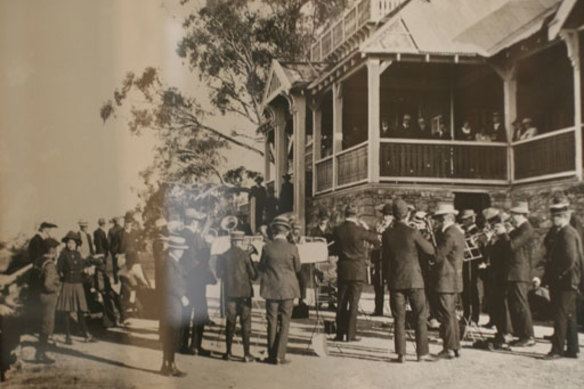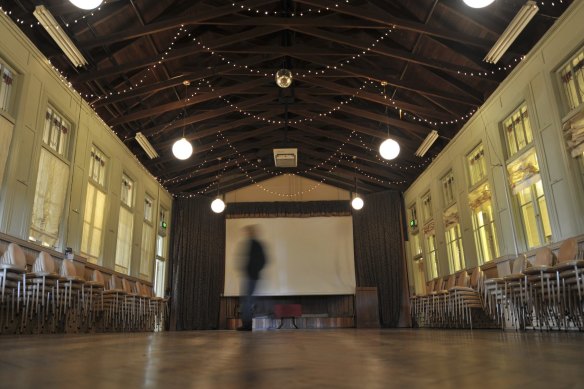Save articles for later
Add articles to your saved list and come back to them any time.
High above our everyday existence floats a glorious, if ghostly, reminder that once, the state of Victoria felt it was its duty to make available luxurious holidays that were within the means of most families, and even pensioners.
The place is empty now. Of course. The idea that a government could be so exuberantly generous to its people comes, in the 21st century, from a dreamscape.
The abandoned Mount Buffalo Chalet.Credit: Tony Wright
The Mount Buffalo Chalet, for much of the past century, was an elegant place of concert halls, sitting and dining rooms, billiard tables, roaring log fires, golf and croquet in the grounds in summer, skiing and ice-skating on its lake during winter, and boating when the melt came.
Just as the chalet emptied of customers years ago, however, its public funding clipped and commercial operators no longer interested, climate change has seen off ice skating.
Nearby Lake Catani was built relatively shallow in 1910 – ensuring it froze solid for the skating pleasure of the chalet’s winter holidaymakers – but hasn’t frozen for many years.
The last person to risk it was Eddie Spicer, an Australian speed skating champion who trained on the lake in the 1950s.
Inexplicably, aged 63, he went skating alone on Lake Catani in 1997. This time, climate change asserted itself without pity, and he drowned.
All things pass, of course.
What we call Mount Buffalo, a place named by Hume and Hovell in 1824, was forever the traditional home of a mysterious, little-known Aboriginal people named the Mogullumbidj, according to historian Jacqui Durrant, who has written of them in her paper, Mogullumbidj: First People of Mount Buffalo, Victorian Historical Journal, Volume 91, Number 1, June 2020.
Durrant’s work is a fascinating telling of pre-history and the brutal end of this presumed clan.
Today, however, if only for the sake of space, we limit our view to something that has all but passed much more recently.
The Mount Buffalo Chalet was run, glory be, by the Victorian Railways Refreshment Service from 1924 to 1985.
You could take a train from Melbourne to Porepunkah where the Buckland and Ovens rivers meet, almost at the foot of the mountain, and travel the rest of the way by motor coach.
The rail and coach trip was thrown in as part of the chalet’s tariff, including all meals: eight shillings a day in the 1920s and ’30s.
Mount Buffalo Chalet was once an elegant place of recreation for Victorians.Credit: Tony Wright
Eight shillings in 1929 would be worth about $40 in today’s money, calculated on the retail price index. You’d be hard-pressed to go camping in a tent today for $40 a day, let alone stay at a luxury resort with everything thrown in.
The government’s largesse, via the subsidised railways, meant that decades before Australia’s commercial ski resorts became playgrounds largely confined to the wealthy, average wage-earning families, with a bit of scrimping and saving, could manage a holiday in the clouds, living as if they were part of high society.
After a day’s skiing or horse riding or simply taking in the wondrous views from the high cliffs, guests could go dancing in the evenings in the ballroom, or take in a film on Sunday nights. Each Sunday afternoon, high tea was served. Dinner came with silver service and linen tablecloths.
A study by the State Library of Victoria found that between October 1924 and June 1930, 27, 609 visitors stayed at the chalet, and patronage remained high even during the tight years of the Depression.
The opening of the Mount Buffalo Chalet in 1910.
The Victorian Railways brought a fellow named Franz Skardarasy from Austria to Mount Buffalo in 1936 to run the first ski school in Australia, dramatically increasing the attractiveness of the mountain. The following year, Australia’s first ski tow – a Cadillac engine driving a drum winding an endless rope – was established at nearby Dingo Dell.
The chalet became so popular after World War II that a ballot was introduced to limit the press of numbers wishing to travel there.
City dwellers had to attend the Melbourne Tourism Bureau in person to apply for the ballot. Country people could apply by post.
In 1952, the State Library’s investigations showed the daily average number of guests in residence at the chalet was 162.
Inside the historic Mount Buffalo Chalet in 2010.Credit: Joe Armao
Gradually, however, the edges of this castle in the sky began fraying.
The state government, on one of its early cost-saving maulings, closed the railway line between Wangaratta and Bright, with its lovely little stop at Porepunkah, in 1952. Guests caught a decidedly less-romantic bus from Wangaratta from then on.
By 1985, the Victorian Railways decided that enabling delicious holiday-making atop a mountain wasn’t its style any more.
The chalet was taken over by the Victorian Tourism Commission, which wasn’t quite up to the task of maintaining the huge old wooden building beset for more than seven decades by winter blizzards and summer heatwaves.
The chalet once boasted a grand ballroom.Credit: Joe Armao
It was let out to private operators in the mid-1990s. But in 2006, bushfires threatened the chalet, and the mountain’s Cresta Valley ski lodge was destroyed.
The loss of trade forced the Mount Buffalo Chalet itself to close in 2007.
There it sits still, empty and beautiful and ghostly as a film set from The Shining, reminding us that once, even the railways had a grand vision about offering a little affordable magic to the lives of ordinary citizens.
And year by year, natural snow cover becomes less reliable, for there are no snow-making facilities, and Lake Catani no longer freezes.
Things pass.
The Opinion newsletter is a weekly wrap of views that will challenge, champion and inform your own. Sign up here.
Most Viewed in National
From our partners
Source: Read Full Article
